So, you’ve noticed your furry companion taking their kibble out of the bowl before eating it, and it’s left you scratching your head. It’s a common behavior that can be puzzling, but fear not, there are reasons behind it.
Understanding why your dog is doing this can provide insight into their natural instincts and how they perceive mealtime. By unraveling this mystery, you’ll be better equipped to address their needs and strengthen your bond with them.
Key Takeaways
- Dogs have a natural instinct to move their food away from the bowl due to resource guarding and their pack mentality.
- Feeding multiple animals separately and providing companionship during mealtime can prevent competition and the desire to be near their owners while eating.
- Environmental factors such as the presence of other dogs and the location of the water bowl can influence mealtime behavior.
- Health considerations, such as dental issues or digestive problems, should be taken into account to ensure dogs can eat without discomfort.
Canine Instinctual Behaviors
Understanding canine instinctual behaviors is crucial for dog owners to create a harmonious and fulfilling environment for their pets.
Canine behavior is deeply rooted in their ancestral instincts, particularly when it comes to their eating habits. Dogs, being pack animals, have a natural inclination to move their food away from the bowl. This behavior stems from their instinct to protect their resources, a trait known as resource guarding.
It’s essential to recognize that this behavior isn’t a sign of disobedience, but rather a deeply ingrained instinct. Additionally, dogs may carry their food to be near their owners during mealtime, seeking companionship as they eat, which is another instinctual behavior related to their pack mentality.
It’s important to understand the root cause of these behaviors, as they may also be indicative of underlying health issues or dissatisfaction with their food.
Behavioral Triggers and Solutions
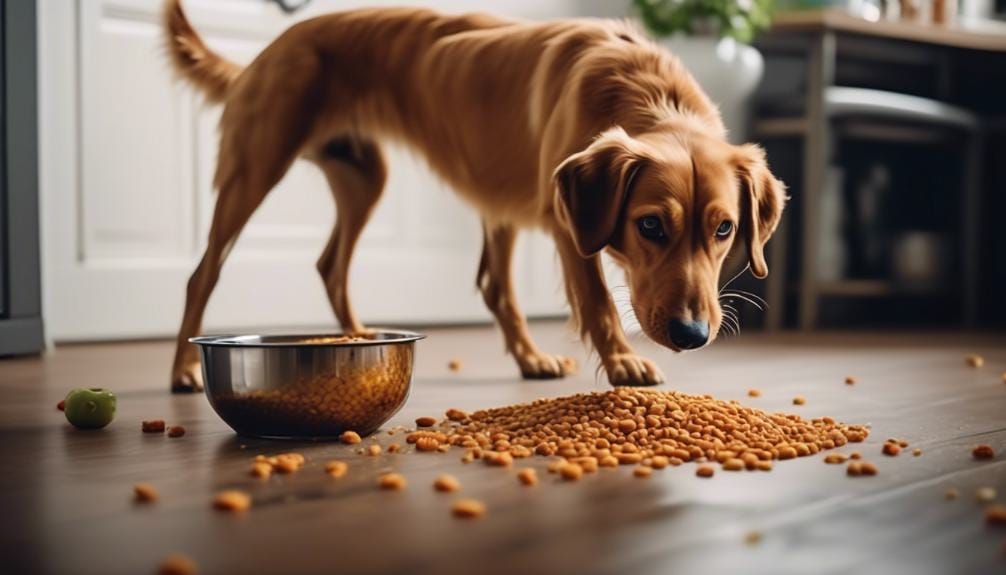
To effectively address behavioral triggers and find solutions, it’s essential to observe and understand your dog’s responses during mealtime. Your dog’s behavior around the food bowl can be influenced by various factors.
Eating without interruption is crucial for some dogs, as they may feel the need to take food from the bowl and store it elsewhere due to instincts from their ancestral pack behaviors. This behavior can also be triggered by the risk of having their food taken by another animal in the household. To address this, consider feeding multiple animals separately to prevent competition and the instinct to move food away from the bowl.
Additionally, providing companionship during mealtime can alleviate loneliness and the desire to be near their owners while eating. If you have cats and dogs, consider moving their food and water bowls apart to solve any issues related to cats disliking their bowls being near each other.
Understanding and respecting your pet’s instinctual behaviors is crucial to addressing their food-related habits. If the behavior persists or becomes problematic, seek professional advice to ensure proper guidance and training.
Environmental Factors and Mealtime Behavior

When observing your dog’s behavior around the food bowl, it’s important to consider how environmental factors can influence their mealtime habits and overall behavior. Environmental factors play a crucial role in shaping your dog’s eating habits and can affect their behavior significantly. Here are three key environmental factors to consider:
- Pack and Fight Dynamics: In a multi-dog household, the presence of other dogs during mealtime can create a competitive atmosphere. Some dogs may feel the need to take food from their bowl and eat in a separate location to reduce the risk of a fight over resources.
- Simulating Wild Animals: Dogs, by nature, are scavengers. Removing food from the bowl and eating in a different spot could be a way to mimic natural behaviors of wild animals, which instinctively hide and consume their food to avoid competition from other animals.
- Water Bowls and Distractions: The location of your dog’s water bowl or the presence of distractions near the feeding area can also influence their eating behavior. Some dogs may prefer to eat away from their water source or in a quieter environment.
Understanding these environmental influences can help in implementing behavior modification techniques such as using puzzle feeders or changing the feeding environment to promote healthier mealtime behaviors for your dog.
Health Considerations and Mealtime Habits
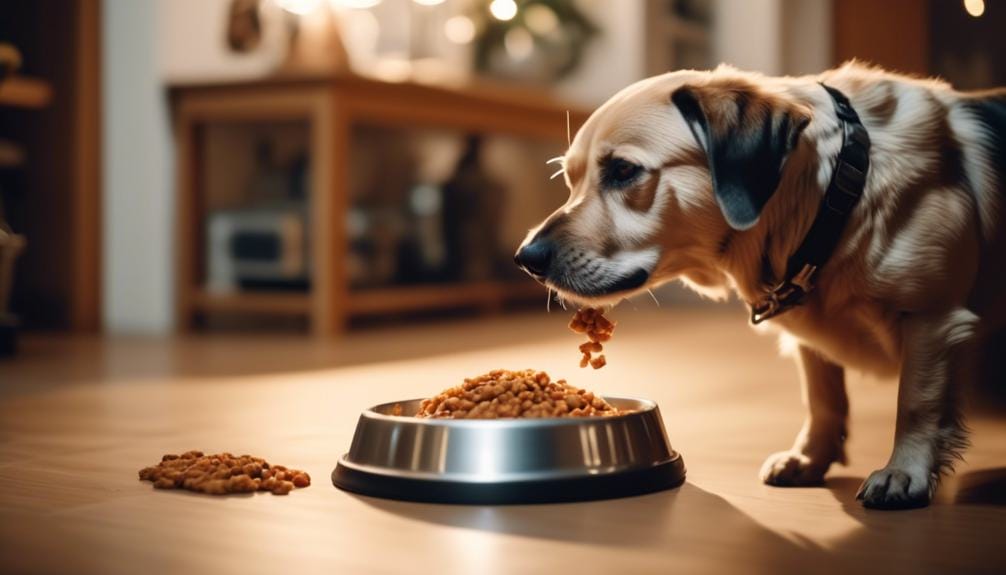
Considering the health needs of your dog and their mealtime habits, it’s essential to understand how their physical well-being can impact their feeding behavior.
Some dogs, especially large breeds or those with medical conditions, may find it uncomfortable to eat from a bowl. They might feel more secure when eating off the floor. If your dog removes food from the bowl, it could also indicate dental issues or digestive problems.
Dental issues can make it painful for dogs to eat from a bowl, while digestive problems may cause discomfort during mealtime. To ensure that your dog can eat without the risk of discomfort, it’s important to observe their behavior and seek professional guidance if necessary.
Additionally, some dogs have a natural instinct to store food. This behavior, while normal, may stem from their evolutionary past when they’d to store a piece or two for later. It’s crucial for dog owners to be aware of these factors and make adjustments to ensure that their furry family members can enjoy mealtime without any physical hindrances.
Strengthening the Human-Canine Bond Through Understanding
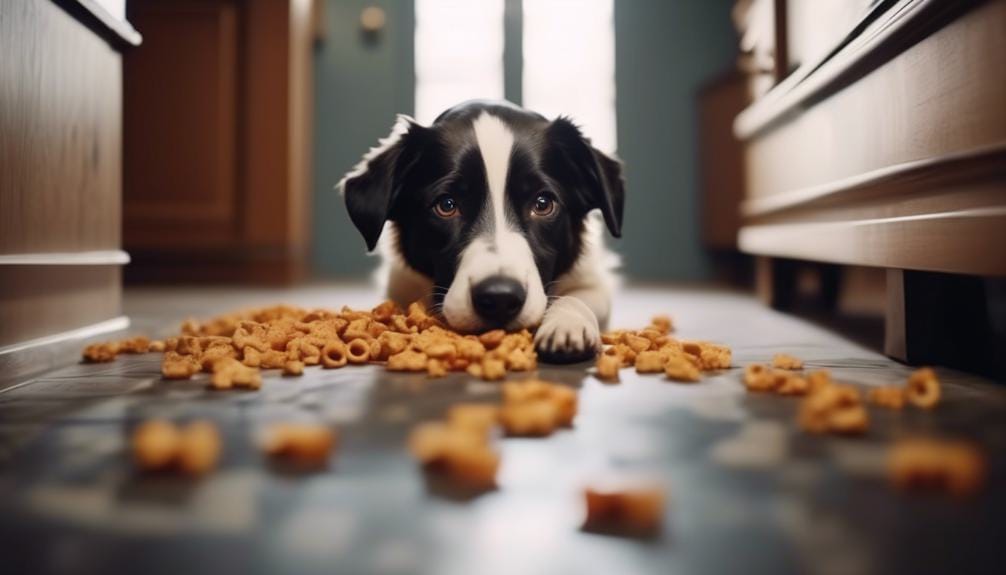
Understanding canine behavior strengthens the bond between humans and their furry companions, fostering a deeper connection based on mutual understanding and respect. This bond is crucial for establishing a harmonious and fulfilling relationship with your dog.
Here are some ways to strengthen the human-canine bond through understanding:
- Companionship During Mealtime: Providing companionship during mealtime can help address your dog’s instinctual need for company. Sitting near your dog while they eat can provide a sense of security and reassurance, strengthening the bond between you and your pet.
- Respect Unique Factors: Understanding the unique factors that influence your dog’s behavior, such as breed-specific instincts and pack mentality, allows you to adapt your approach to feeding and companionship. This understanding fosters mutual respect and a deeper connection.
- Adapt the Eating Area: Adapting the eating area to accommodate your dog’s preferences, such as providing separate feeding spaces for multiple dogs or adjusting the location of food and water bowls, can help alleviate food guarding behaviors and promote a more peaceful mealtime experience.
Frequently Asked Questions
What Does It Mean When Dog Takes Food Out of Bowl?
When your dog takes food out of the bowl, it could be instinctual behavior to protect their meal or a longing for companionship during mealtime. It’s a natural canine instinct that can be addressed with proper care.
Why Does My Dog Back Away From Her Food Bowl?
Your dog may back away from her food bowl due to pack mentality, instinctual behavior, or seeking companionship. It’s a natural part of canine behavior influenced by their ancestral instincts. Understanding this can help address the behavior.
Why Does My Dog Move His Dog Food Bowl?
Your dog moves their food from the bowl for various reasons, like mimicking wild behaviors or seeking companionship. Understanding their instincts and providing a safe environment can help address this behavior.
Why Does My Dog Carry His Empty Food Bowl Around?
Your dog may carry the empty food bowl around as a natural instinct to hide and protect food. It’s an ancient behavior from their wild ancestors. Providing a safe feeding area may help reduce this behavior.
Conclusion
Understanding your dog’s behavior when it comes to mealtime can help you address any underlying issues and strengthen your bond. By recognizing their instinctual behaviors, addressing behavioral triggers, and creating a positive mealtime environment, you can help your dog feel more comfortable and secure.
Additionally, considering their health and providing companionship during meals can make a big difference. By being proactive and understanding, you can ensure that mealtime is a positive experience for both you and your furry friend.

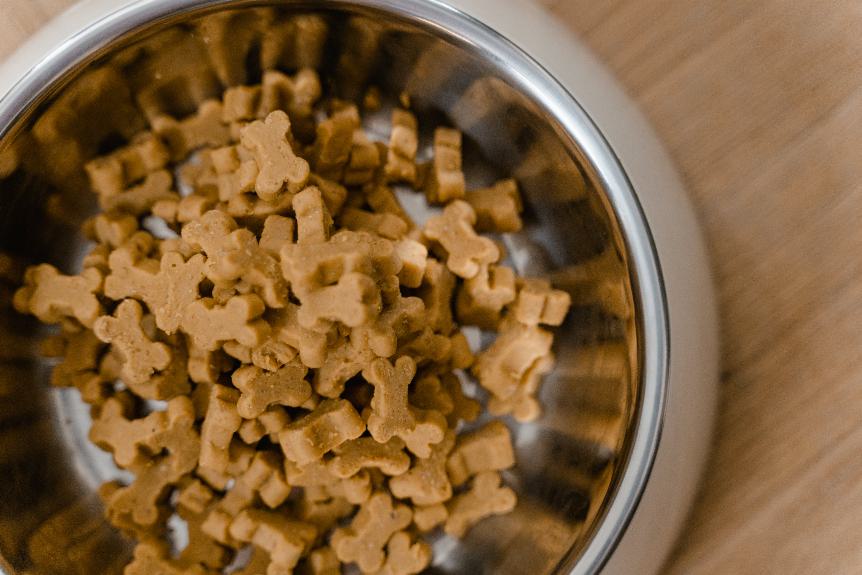

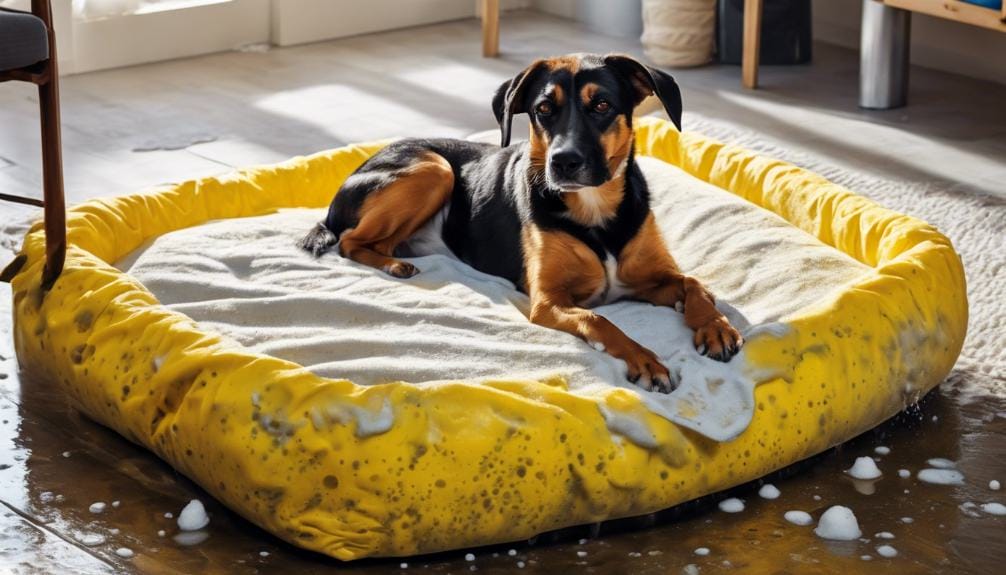
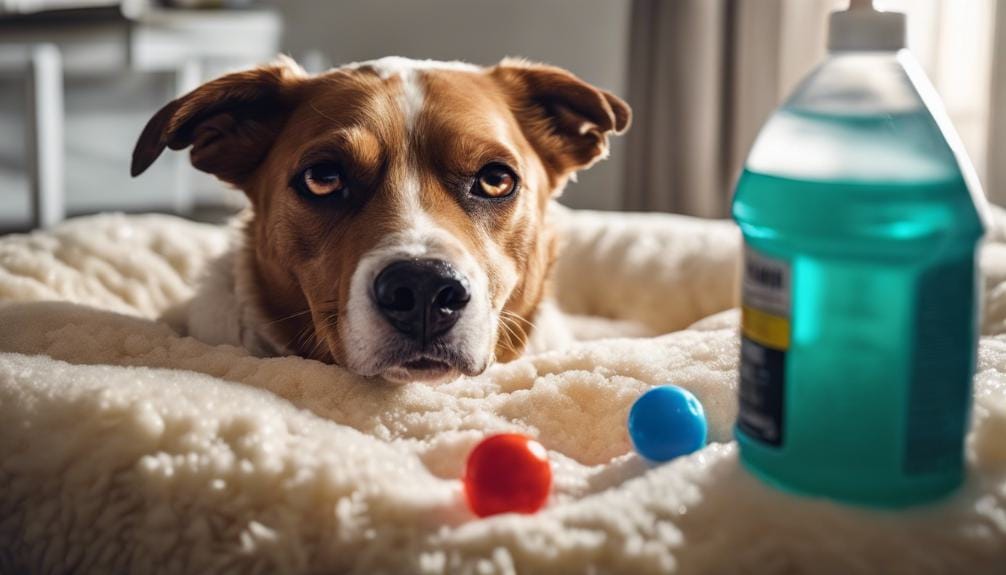
Leave a Reply
You must be logged in to post a comment.